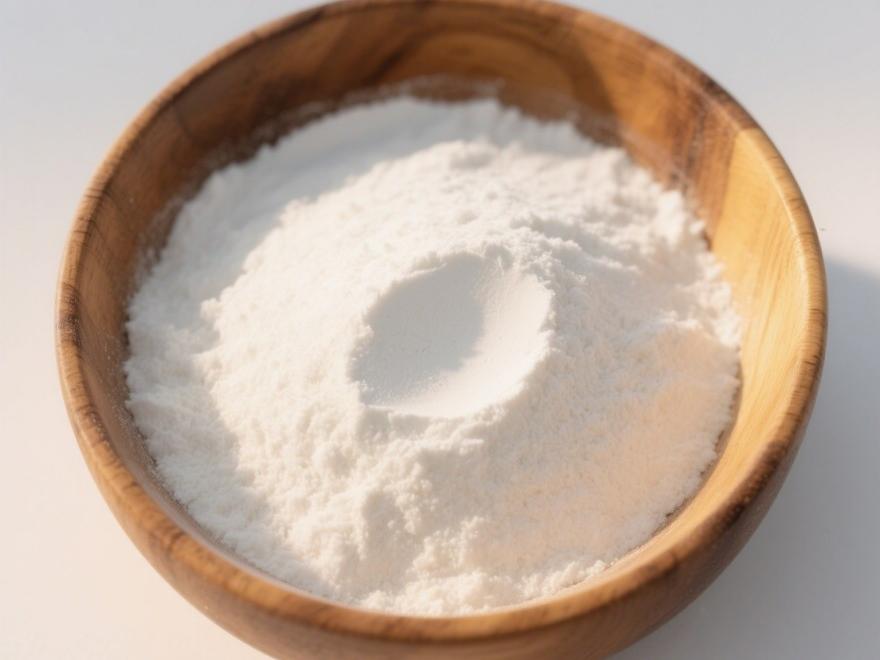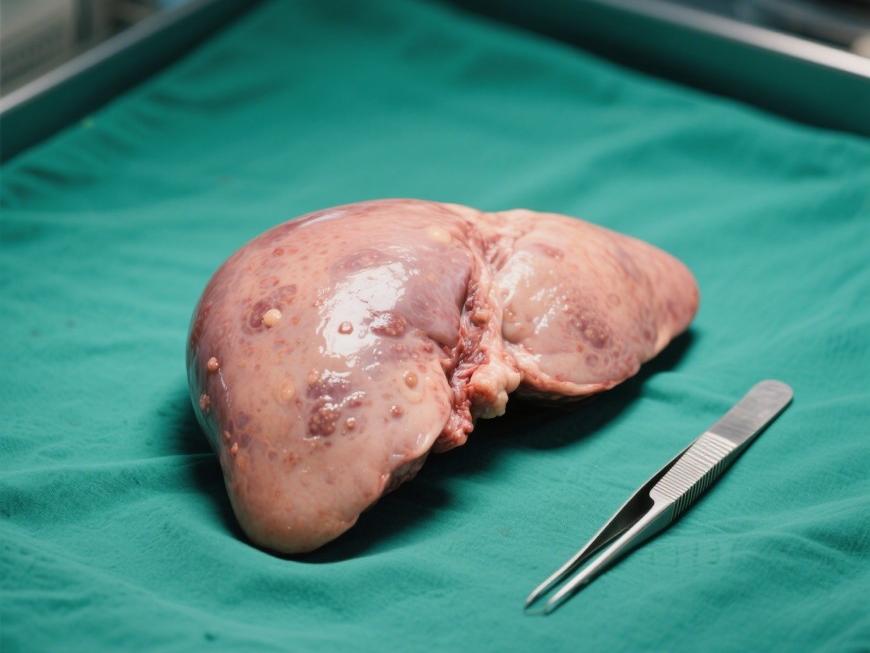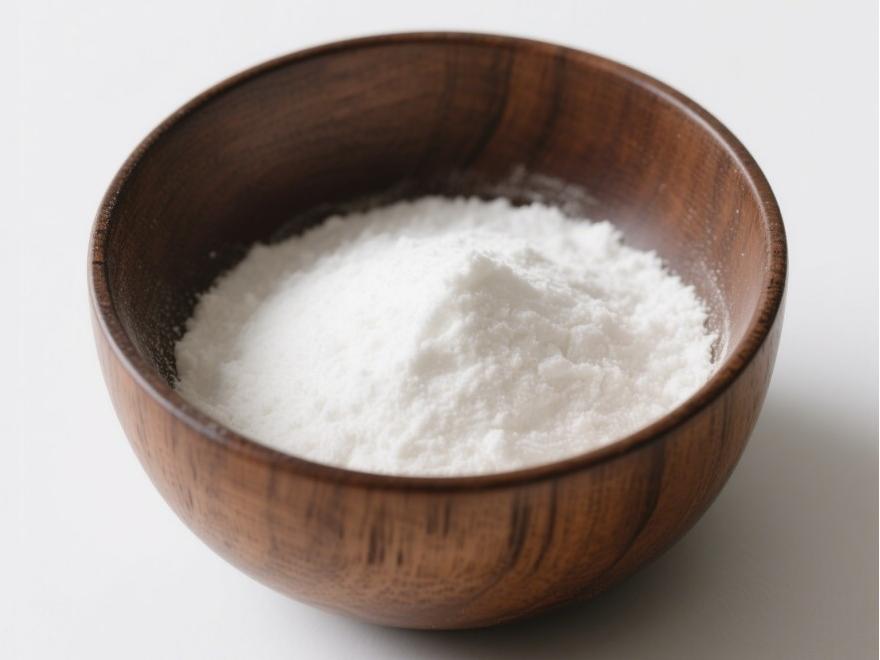Study on Medium Chain Triglycerides for Weight Loss
Medium-chain triglycerides (MCT) are formed by the re-esterification of the hydrolysis products of medium-chain fatty acids (MCFAs) and triglycerides (TG). MCFAs are a mixture of saturated fatty acids with carbon chain lengths ranging from C6 to C12, primarily composed of caprylic acid (C8:0) and capric acid (C10:0), which are mixed in approximately a 2:1 ratio.
When MCT is mixed or esterified with long-chain triglycerides (LCT), it forms a fat emulsion that has gained significant favor in clinical settings in recent years, often used for parenteral nutrition in various clinical conditions. Abroad, MCT is often used as dietary fat for healthy individuals, obese individuals, and patients with hyperlipidemia to help control weight and body fat. In today's world, where the incidence of cardiovascular diseases closely associated with obesity is rising annually, MCT has garnered significant attention due to its ability to reduce fat accumulation and its potential lipid-regulating effects.

1 Metabolic characteristics of MCT
Fatty acids can be classified based on the length of their carbon chains into long-chain fatty acids (≥14 carbon atoms), medium-chain fatty acids (6–12 carbon atoms), and short-chain fatty acids (≤5 carbon atoms). Based on their degree of saturation, they can be classified into saturated fatty acids (SFA), monounsaturated fatty acids (MFA), and polyunsaturated fatty acids (PFA). Generally, the carbon chain length and number of unsaturated double bonds in fatty acids influence fat absorption [1], meaning that shorter-chain fatty acids are more easily absorbed, and those with more double bonds are also more easily absorbed. Saturated fats, which lack double bonds, typically have high melting points and are solid at room temperature, which can impair emulsification and absorption.
However, MCT, a saturated fat, has a lower melting point, similar to that of LCT, which primarily contains PUFA. Additionally, since MCFA have shorter carbon chains than long-chain fatty acids (LCFA), they are more easily absorbed. MCT has low dependence on bile salts and pancreatic enzymes, is easily hydrolyzed in the intestine, and its hydrolysis products, MCFA, bind to albumin after absorption, and are directly transported to the liver via the portal vein [2]. In contrast, the hydrolysis products of LCTs, LCFAs, must be transported to the lymphatic system or peripheral circulation via chylomicrons. Additionally, MCFAs do not require carnitine and directly enter liver cell mitochondria for β-oxidation, which occurs rapidly and completely, thus avoiding accumulation in adipose tissue and liver tissue.
2 Effects of MCT on body weight and blood lipids
As is well known, obesity, hypertension, hyperlipidemia, diabetes, coronary heart disease, and cerebrovascular accidents are all closely associated with lipid metabolism disorders, collectively referred to as metabolic syndrome. Considering that the use of drugs to control obesity and hyperlipidemia, which are independent risk factors for cardiovascular diseases (CVD), has side effects, and that traditional dietary treatments involving simply reducing lipid intake are prone to causing deficiencies in fat-soluble vitamins, improving the quality of lipid intake has become particularly important. In recent years, it has been discovered that replacing part of the traditional dietary LCT oil with low-energy-density MCT oil can improve the quality of lipid intake.
2.1 Effects of MCT on Body Weight and Body Fat
The metabolic characteristics of MCT suggest that it may play a role in dietary therapy for obesity. Noguchi et al. [3] observed the thermic effect of food and fat accumulation in obese rats fed diets containing MCT and LCT, and found that the MCT group had a significantly higher food thermic effect, as well as lower body fat and abdominal fat content compared to the LCT group, consistent with previous studies.
Numerous studies have reported positive effects of dietary MCT on human body weight and body composition changes, as well as investigations into their mechanisms. Detailed research has also been conducted on the influence of confounding factors such as intake amount, intake timing, and BMI on body fat distribution, energy expenditure (EE), postprandial thermic effect, and fat oxidation. Overall, the conclusion is that MCT not only helps reduce total body weight but also helps reduce visceral fat and subcutaneous fat area.

Kasai et al. [4] divided 82 healthy individuals into two groups, with one group consuming 14 g/day of MCT and the other consuming 12 g/day of LCT for breakfast over a 12-week period. The results showed that compared to the LCT group, the MCT group experienced significant reductions in body weight, body fat, subcutaneous fat, and visceral fat, consistent with the findings of Nosaka et al. [5]. It is generally believed that the ability of MCT to control weight is primarily due to its effects on increasing EE, enhancing postprandial thermogenesis, promoting fat oxidation, and controlling appetite [5,6]. Some reports suggest that the weight loss effects of MCT are more pronounced in individuals with higher BMI [7], but St-onge et al. [8] found that in men with higher body weight, the increases in EE and fat oxidation induced by MCT intake were lower compared to men with lower body weight.
The intake levels and forms of MCT vary widely across studies, with no uniform standard. Generally, interventions using energy-balanced diets with appropriate MCT energy ratios yield more favorable results. The duration of intervention also varies, typically ranging from 2 to 12 weeks. Some studies have explored the time-dependent effects of MCT, suggesting that long-term effects may be less pronounced than short-term effects [9], potentially due to metabolic adaptation. Overall, moderate MCT intake appears to have a positive impact on short-term weight control in obese individuals.
2.2 Effects of MCT on Lipids
As an effective “weight-loss” fat, the effects of MCT on lipid metabolism and its mechanisms remain incompletely understood. In recent years, research findings on the effects of MCT on blood lipids and lipid metabolism have been inconsistent. Some researchers are concerned that the benefits of MCT on energy metabolism may be offset by its adverse effects on total cholesterol (TC) and total triglyceride (TG) levels, both of which are important risk factors for CVD.
2.2.1 Animal Studies
Animal studies have primarily compared MCT/LCT with LCT emulsions or feed. The conclusions regarding the effects of partially replacing LCT with MCT on blood lipids are inconsistent, but there is general agreement on the effects on liver lipid metabolism. LCT primarily contains polyunsaturated fatty acids (PUFAs), which include essential fatty acids that can help improve blood lipids. However, the presence of unsaturated bonds increases the risk of oxidative damage. In contrast, MCT, which contains only saturated bonds, is relatively resistant to oxidation.
Ronis et al. [10] selected rats with alcoholic liver disease and replaced corn oil with MCT at energy ratios of 10%, 20%, and 30%. They found that as the content of saturated fat increased, all liver pathological indicators, including lipid peroxidation, and oxidative stress markers gradually decreased, indicating that MCT enhanced the antioxidant capacity of liver cell membranes. Other studies have also concluded that the intake of saturated fat MCT not only does not cause but actually improves liver fat deposition and reduces oxidative stress [11]. This may be due to the rapid hydrolysis and extrahepatic transport of MCT, which directs more polyunsaturated fatty acids to extrahepatic utilization [12], thereby preventing the accumulation of liver triglycerides (TG). However, this may also lead to elevated plasma TG levels [13]. Some studies suggest that chemically bound MCT/LCT fat emulsions clear from the blood faster than physically mixed MCT/LCT fat emulsions and do not cause significant increases in plasma TG or TC levels [14].
2.2.2 Population studies
Currently, MCT/LCT emulsions have a wide range of applications in clinical nutritional support. Overseas, MCT is used as an adjunctive therapy for conditions such as sepsis, severe malnutrition in cancer patients, diarrhea in HIV-positive individuals, and fat malabsorption, achieving satisfactory results and gaining increasing popularity. However, recent studies on the effects of MCT on lipid levels have yielded inconsistent results, possibly due to differences in dosage and formulation. Most positive reports focus on MCT's ability to lower TG levels or maintain them within normal ranges.
Schlotzer et al. [15] found that in 12 healthy men who received an infusion of a new fat emulsion composed of MCT, olive oil, and fish oil, serum TG concentrations were significantly reduced, and the half-life was significantly shorter compared to the use of a standard soybean oil emulsion. Other studies have also found that MCT reduces the ratio of total cholesterol (TC) to high-density lipoprotein cholesterol (HDL-C) [16].
Bourque et al. [17] used a functional oil blend containing MCT, plant sterols, and n-3 fatty acids (Fcto) in the diet of overweight women. After 27 days, the average plasma TC concentration and low-density lipoprotein cholesterol (LDL-C) concentration in the Fcto group were lower than those in the control group, HDL-C concentration remained unchanged, but the HDL:LDL ratio improved. Considering that a 1% reduction in LDL-C concentration reduces the risk of coronary heart disease by 2%, the reduction in LDL-C in the Fcto group could lower the risk of CVD by 31%. Similarly, St-Onge et al. [18] conducted a 29-day dietary study on healthy individuals and found that the functional oil Fcto, a mixture of MCT and plant sterols, resulted in a greater reduction in TC concentration compared to the olive oil control group, while LDL-C levels decreased in the Fcto group but remained unchanged in the olive oil group. These long-term studies involving large populations demonstrate that the combined use of LCT and MCT may indeed offer potential benefits in reducing the risk of cardiovascular disease by improving lipid profiles.

Although some studies have reported that MCT increases plasma LDL-C and TG levels in healthy individuals, thereby being detrimental to health [19], other researchers have suggested that moderate intake of MCT does not elevate postprandial TG levels or other lipid parameters [5], and therefore its use in clinical emulsions is considered safe [20]. Reports suggesting adverse effects of MCT on lipid profiles may partly stem from long-term consumption of single, excessive doses of MCT. Tholstrup et al. [19] found that after 21 days of consuming 70 g/day of MCT, plasma LDL-C and TG levels increased in 17 healthy young men. However, there have also been reports that the average postprandial triglyceride levels were 15% lower than baseline after consuming 71 g of MCT [2]. Therefore, in long-term intervention studies, the dosage and form of MCT may influence its regulatory effects on blood lipids.
However, the optimal dosage of MCT alone or in combination with LCT, as well as the optimal ratio of MCT in mixed oils, remains unclear. Although MCT has a low energy density, MCT, as a fat, is considered safe when consumed at levels below the dietary fat energy ratio in an energy-balanced diet.
Asakura et al. [21] conducted a 12-week dietary study in 10 patients with primary hypertriglyceridemia, gradually increasing the proportion of MCT in fat from 0% to 100%. The results showed that moderate to high proportions of MCT increased fasting plasma TC, LDL-C, and VLDL-C concentrations, while fasting TG concentrations remained unchanged, but postprandial TG levels were significantly lower than those with corn oil. Whether high-dose MCT causes hypercholesterolemia requires further study, and the therapeutic dosage and ratio of MCT, as well as the existence of a dose-response relationship, need to be confirmed through further experiments.
3 Possible mechanisms by which MCT affects body weight and blood lipids
It is generally believed that MCT reduces body weight and fat deposition through several mechanisms: low energy density, increased satiety to suppress appetite, rapid hepatic transport and oxidation, and increased energy expenditure (EE), among others. Many studies have also validated these characteristics of MCT [2,5,6]. Among these, the hormones involved in the mechanism by which MCT induces satiety include cholecystokinin, YY peptide, gastrin, neurotensin, and pancreatic polypeptide; however, the exact mechanism remains unclear.
However, these may not provide a complete explanation. Previous studies have suggested that MCFAs may have direct metabolic effects on adipocytes, but sufficient experimental evidence is lacking. However, it has been reported that traditional high-fat diets are associated with increased expression of peroxisome proliferator-activated receptor Y (PPARY) in adipose tissue [22]. Recently, it was discovered that caprylic acid, an 8-carbon MCFA, can effectively inhibit PPARY expression and reduce cellular TG synthesis [23]. As a key regulator of fat differentiation and metabolism, and playing a crucial role in lipid metabolism, the nuclear transcription factor PPARY can be activated by various dietary LCFAs and acts as a nutritional sensor that converts environmental stimuli into signals for the expression of metabolic genes [24].
Han et al. [25] found that rats fed MCT had not only lower fat pad wet weight but also lower plasma TG, free cholesterol, and leptin levels compared to LCT control group rats. More importantly, PPARY mRNA expression in adipose tissue was reduced in the MCT group, Another major lipogenic transcription factor, CCAAT/enhancer-binding protein (C/EBP), was also downregulated, leading to reduced mRNA levels of key enzymes involved in lipid synthesis, such as lipoprotein lipase (LPL) and acyl-cysteine oxidase (ACs-1). Glucose tolerance tests also indicated improved glucose tolerance in the MCT group, with reduced blood glucose concentrations. In adipocyte culture, they also found that MCFAs bind to adipose tissue and mediate the downregulation of adipogenesis genes, suggesting that MCFAs may play an important role in the long-term regulation of adipocyte metabolism. Some metabolic effects of MCFAs may originate from the levels of adipogenesis transcription factors; however, significant downstream metabolic effects require a lag time. Whether MCT-induced weight loss downregulates the expression of adipogenesis transcription factors or MCTs directly influence adipogenesis transcription factors in vivo to inhibit weight gain requires further research to determine.

Increased free fatty acids promote lipid synthesis in normal adipocytes by activating PPARY through ligand binding, a phenomenon known as the “nutritional dietary promotion effect” [26]. At high concentrations, MCFAs can replace the intrinsic ligands of PPARY (LCFAs or their derivatives), thereby reducing the number of active domains. Postprandial stable MCFA concentrations in adipocytes may be significantly higher than LCFAs [25], enabling MCFAs to compete for PPARY ligands and reduce the activity of this transcription factor, thereby decreasing the expression of genes involved in fatty acid uptake and esterification, and ultimately reducing the fat storage capacity of adipocytes. This also forces more dietary MCFAs to be delivered to non-adipose tissues such as muscle, where most MCFAs are oxidatively processed, partially explaining why MCTs have a higher postprandial thermogenic effect. In fact, it has been found that caprylic acid interferes with the synthesis of the synthetic ligand that activates PPARY and weakens the differentiation-inducing ability of the PPARY agonist troglitazone (TZDs) [23]; however, MCFAs can weakly activate PPARY in the absence of synthetic or endogenous ligand proteins. In this regard, caprylic acid exhibits properties similar to those of some partial agonists of PPARY [27].
How does a diet containing MCTs alter PPARY expression, and whether such changes are associated with weight loss warrants further investigation. Studies on whether MCTs affect human PPARY expression, and whether they have activating or inhibitory effects, are currently lacking.
In summary, extensive research has confirmed that MCT is a special fat with preventive and inhibitory effects on obesity, suggesting that MCT holds promise as an adjunctive therapy for addressing medical issues associated with obesity. However, due to the uncertainty regarding its role in lipid metabolism, further studies are needed to explore the mechanisms of MCT's effects on lipid metabolism and to determine optimal usage methods for achieving ideal overall therapeutic effects.
Reference
[1]Ramirez M,Amate L,Gil A . Absorption and distribution of dietary fatty acids from different sources[J].Early Hum Dev,2001,65(Suppl):S95-S101 .
[2]Calabrese C,Myer S,Munson S,et al . A cross-over study of the effect of a single oral feeding of medium chain triglyceride oil vs . canola oil on post-ngestion plasma triglyceride levels in healthy men[J].Altern Med Rev, 1999,4(1):23-28 .
[3]Noguchi O,Takeuchi H,kubota F,et al . Larger dietinduced thermogenesis and less body fat accumulation in rats fed medium-chain triacylglycerols than in those fed long-chain triacylglycerols[J].J Nutr Scivitaminol,2002, 48(6):524-529 .
[4]kasai M, Nosaka N, Maki H,et al . Effect of dietary medium- and long-chain triacylglycerols(MLCT ) on accumulation of body fat in healthy humans[J].Asia Pac J Clin Nutr,2003,12(2):151- 160 .
[5]Nosaka N,Maki H . Effects of margarine containing medium-chain triacyglycerols on body fat reduction in humans[J].J Atheroscler Thromb,2003,10(5):290-298 .
[6]St-Onge MP,Ross R,Parsons WD,et al . Medium-chain triglycerides increase energy expenditure and decrease adiposity in overweight men[J].Obes Res,2003,11(3): 395-402 .
[7]Tsuji H,kasai M . Dietary medium-chain triacylglycerols suppress accumulation of body fat in a double-blind, controlled trial in healthy men and women[J].J Nutr, 2001,131:2853-2859 .
[8]St-Onge MP,Jones PJ . Greater rise in fat oxidation with medium-chain triglyceride consumption relative to long- chain triglyceride is associated with lower initial body weight and greater loss of subcutaneous adipose tissue[J].Int J Obes Relat Metab Disord,2003,27(12):1565-1571 .
[9]krotkiewski M . value of vLCD supplementation with medium chain triglycerides[J].Int J Obes Relat Metab Disord,2001,25(9):1393-400 .
[10]Ronis MJ,korourian S,Zipperman M,et al . Dietary saturated fat reduces alcoholic hepatotoxicity in rats by altering fatty acid metabolism and membrane composition [J].J Nutr,2004,134(4):904-912 .
[11]Lin MT,Yeh SL,kuo ML,et al . Effects of medium-chain triglyceride in parenteral nutrition on rats undergoing gastrectomy[J].Clin Nutr,2002,21(1):39-43 .
[12]Ton MN,Chang C,Carpentier YA,et al . In vivo and in vitro properties of an intravenous lipid emulsion containing only medium chain and fish oil triglycerides[J].Clin Nutr, 2005,24(4):492-501 .
[13]Beynen AC,kappert HJ,Lemmens AG,et al . Plasma lipid concentrations, macronutrient digestibility and mineral absorption in dogs fed a dry food containing medium-chain triglycerides[J].J Anim Physiol Anim Nutr(Berl),2002, 86(9- 10):306-312 .
[14]simoens Ch,Deckelbaum RJ,Carpentier YA . Metabolism of defined structured triglyceride particles compared to mixtures of medium and long chain triglycerides intravenously infused in dogs[J].Clin Nutr,2004,23(4): 665-672 .
[15]schlotzer E,kanning U . Elimination and tolerance of a new parenteral lipid emulsion( sMOF)— a double-blind cross-over study in healthy male volunteers[J].Ann Nutr Metab,2004,48(4):263-268 .
[16]Liu YM, williams s, Basualdo-Hammond C,et al . A prospective study:growth and nutritional status of children treated with the ketogenic diet[J].J Am Diet Asso,2003, 103(6):707-712 .
[17]Bourque C, st-Onge MP, Papamandjaris AA,et al .Consumption of an oil composed of medium chain triacyglycerols,phytosterols,and n-3 fatty acids improves cardiovascular risk profile in overweight women[ J].Metabolism,2003,52(6):771-777 .
[18]st-Onge MP,Lamarche B,Mauger JF,et al . Consumption of a functional oil rich in phytosterols and medium-chain triglyceride oil improves plasma lipid profiles in men[J].J Nutr,2003,133:1815-1820 .
[19]Tholstrup T,Ehnholm C . Effects of medium-chain fatty acids and oleic acid on blood lipids,lipoproteins,glucose, insulin,and lipid transfer protein activities[J].Am J Clin Nutr,2004,79(4):564-569 .
[20]Pitkanen OM,Luukkainen P,Andersson s . Attenuated lipid peroxidation in preterm infants during subsequent doses of intravenous lipids[J].Biol Neonate,2004,85(3): 184-187 .
[21]Asakura L, Lottenberg AMP . Dietary medium-chain
triacylglycerol prevents the postprandial rise of plasma triacylglycerols but induces hypercholesterolemia in primary hypertriglyceridemic subjects[J].Am J Clin Nutr,2000, 71:701-705 .
[22]Redonnet A, Groubet R, Noel-suberville C,et al .Exposure to an obesity-inducing diet early affects the pattern of expression of peroxisome proliferator,retinoic acid,and triiodothyronine nuclear receptors in the rat[J].Metabolism:clinical and experimental,2001,50:1161- 1167 .
[23]Han J, Farmer sR, kirkland JL,et al . Octanoateattenuates adipogenesis in 3T3-L1 preadipocytes[J]. J Nutr,2002,132:904-910 .
[24]Luan J, Browne PO, Harding AH, et al . Evidence forgene-nutrient interaction at the PPARgamma locus[J].Diabetes,2001,50:686-689 .
[25]Han JR,Hamilton JA,kirkland JL,et al . Medium-chain oil reduces fat mass and down-regulates expression of adipogenic genes in rats[J].Obes Res,2003,11(6):734- 744 .
[26]Chawla A,Repa JJ,Evans RM,et al . Nuclear receptors and lipid physiology:Opening the X-files[J].science, 2001,294:1866-1870 .
[27]Oberfield JL,Collins JL,Holmes CP,et al . Peroxisome proliferator-activated receptor gamma ligand inhibits adipocyte differentiation[J]. Proc Natl Acad sci UsA, 1999,96:6102-6106 .
-
Prev
Study on Mct Oil for Neonates
-
Next
Passion Fruit: Flavor and Nutrition Driving Innovation in Food and Beverage Formulations


 English
English French
French Spanish
Spanish Russian
Russian Korean
Korean Japanese
Japanese




